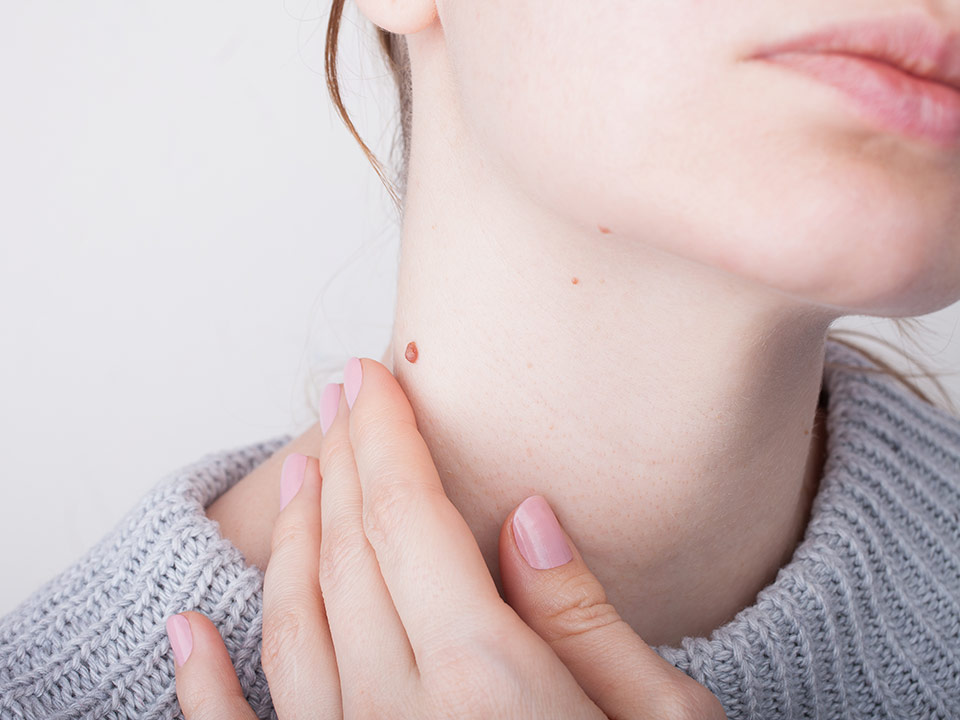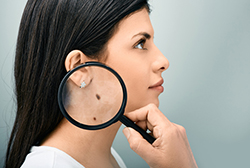
Everything You Need to Know About Moles
Did you know that moles are just a cluster of cells that are responsible for skin pigmentation? Moles tend to be the cause of concern for many since they can develop into melanoma, a type of skin cancer. However, more often than not are harmless. A dermatologist can help you determine whether a mole is harmful or not by examining and regularly monitoring it. Melanoma is easily treatable if caught early. Consult your dermatologist as soon as you notice a mole so they can check it for changes to determine whether it is harmful or not. Our guide on moles should help you develop a better understanding of moles. So, you know which can potentially lead to melanoma.
About moles
Genes and sun exposure are two contributing factors to the number of moles we have. Individuals with more exposure to the sun are more likely to develop moles. However, that doesn’t mean you won’t develop them in sun-protected areas. Moles can appear anywhere on your body. Practically everyone has them and not just one but multiple. You need to be aware of the following three characteristics of your moles:
- Color and texture: While most moles are typically brown, they can also be tan, black, pink, or red. In texture, they can be smooth or wrinkled.
- Shape: They are round or oval in shape.
- Size: The majority of moles are small about 1/4 inch in diameter.
The characteristics of your mole can help you identify which type you have. There are three types:
- Common moles: Can be in various colors but is 1/4 inch in size or smaller. These are harmless.
- Atypical moles: The mole has a scaly or pebbly texture, mixed color, and bigger than a common mole. A dermatologist can help determine whether an atypical mole is harmful or not.
- Melanoma: Moles with melanoma are irregular and typically asymmetrical in shape. These are harmful and need to be treated.
How a mole can cause problems
While most moles are harmless, there is cause for concern since some can potentially lead to cancer. When they tend to grow and divide, you need to be cautious because it is a sign of an abnormality that occurs with melanoma. Like any cancer, it grows quickly and spreads to other parts of the body. Identifying it early is the key to treating it and ensuring it doesn’t spread. This is why monitoring moles is vital when it comes to identifying and treating melanoma.
Checking moles for skin cancer
You should check your moles once a month. You want to focus on the ABCDEs of mole monitoring, which are:
- Asymmetry – analyze the shape of it, asymmetric moles can be a problem.
- Borders – Uneven borders of the mole are a concern.
- Color – Harmless moles are typically the same color throughout. If it has a variety of colors it needs to be checked.
- Diameter – The size of the mole should be less than a quarter of an inch. Keep a check on its size each time you analyze it.
- Evolution – Harmless moles don’t change over time. As soon as you notice it changing its shape, color, or size you should consult your dermatologist.
Regularly monitoring your mole allows you to notice any changes in it. This helps you detect melanoma at its early stages, giving you a fighting chance to beat it.
Common risk factors linked to melanoma
Like with any other cancer, skin cancer can affect anyone. However, the following factors put you more at risk of developing melanoma:
- You have a lot of moles on your body. Since melanoma develops in them, the more moles you have, the more chances of developing skin cancer.
- You have fair, sensitive skin that burns easily in the sun.
- You go out often and expose your skin to the sun.
- You suntan a lot and experience sunburn often.
- You use sunbeds often.
- You don’t protect your skin with sunscreen or block when you expose it to the sun.
- Your family has a history of skin cancer.
While these risk factors put you more at risk of developing melanoma, it doesn’t necessarily mean you will get it. However, take extra precautions such as protecting yourself from the sun when going out and being more vigilant when examining your moles.
When to consult a dermatologist about a mole
If you have a keen eye and feel comfortable about monitoring a mole on your own, feel free to do so. However, the moment you notice any suspicious changes in it, you need to consult a dermatologist. Your dermatologist will assess the mole to determine whether it is benign or something to worry about. They can direct you on whether it needs to be removed or not. If the mole is removed, it is sent to the lab for testing. The test is to determine whether it is cancerous or not and to ensure that melanoma has completely been removed. Depending on the outcome of the test, your dermatologist will suggest additional treatment to remove any remaining cancer cells. You can find tons of home remedies online that claim to help you get rid of moles. Be sure to consult your dermatologist before you try any. The last thing you want is to irritate your skin trying to remove a mole.
Our final thought
There is no need to panic if you notice a new mole on your body. After all, the majority of them are common moles and harmless. However, you do need to monitor the mole to make sure it doesn’t change in its color, size, or shape. That is the only way to stay on top of melanoma before the cancer spreads. The moment you have any doubt about a mole, consult a dermatologist. Our team at Pure Dermatology can help identify whether a mole is harmful or not. We have state-of-the-art technology and over a decade of experience in the field. Not only can we help identify moles but treat them too. Call us book an appointment at 949-706-1469.





